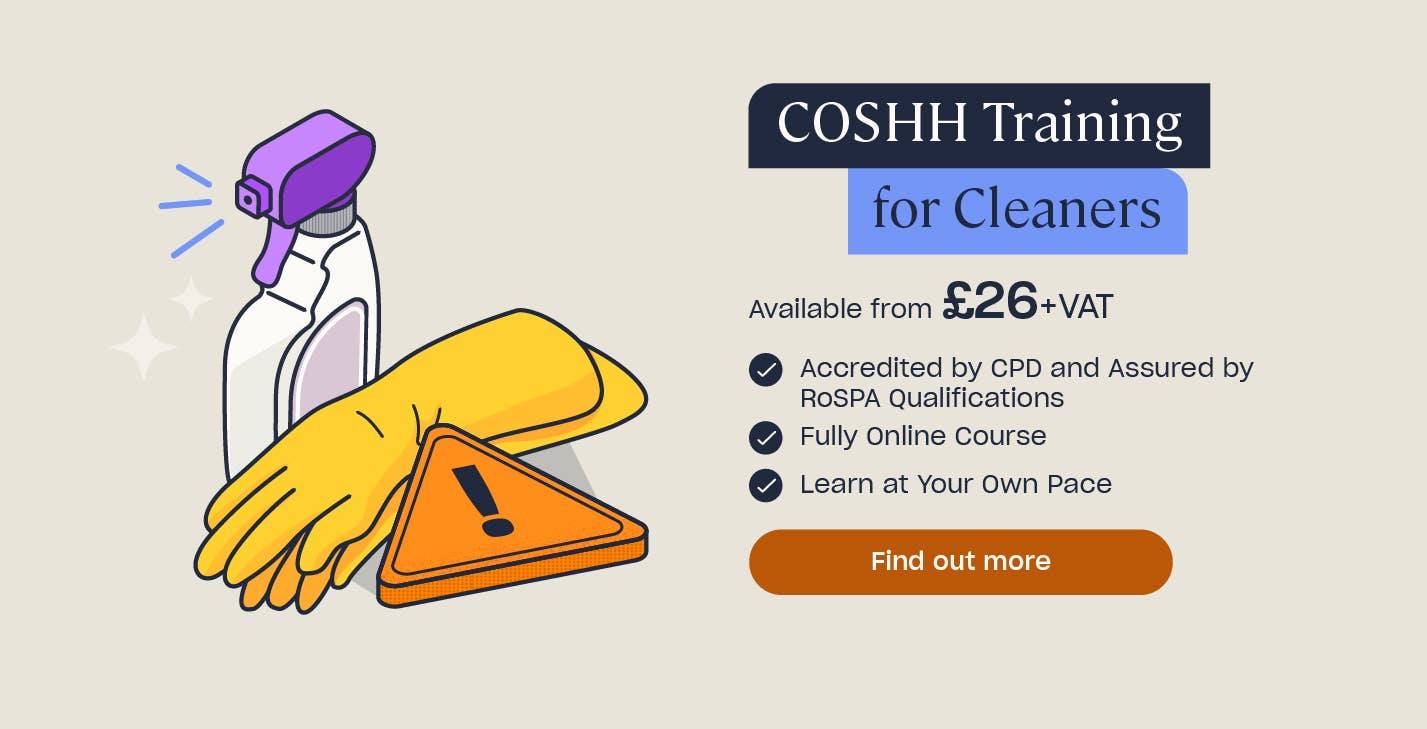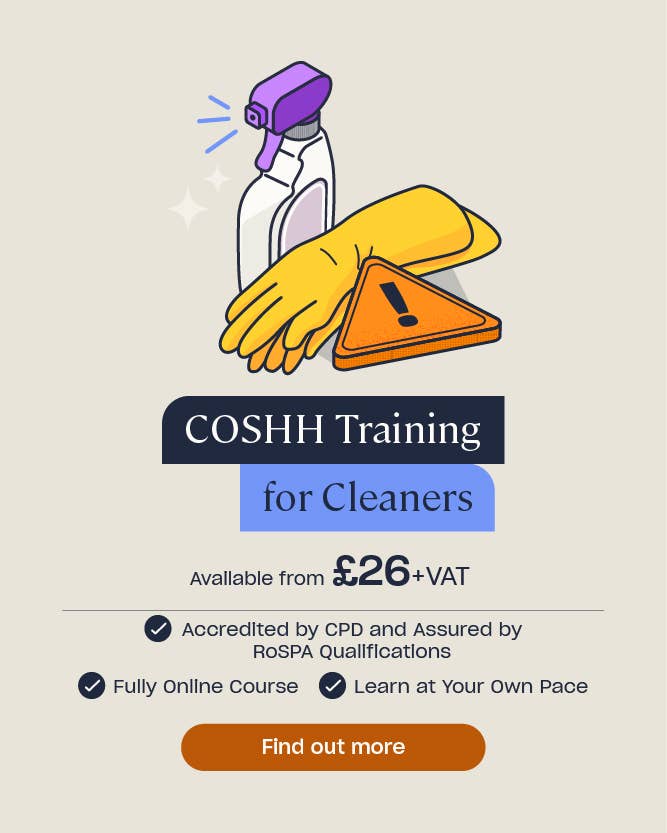What are the Six Stages of Cleaning?
Cleaning is a core part of daily life. Whether you’re cleaning your hands, a kitchen countertop at home, or high-touch surfaces in a workplace, everyone carries out cleaning at some point during their day. In many businesses, cleaning is crucial to the ongoing health and safety of staff and customers.
Adopting an effective cleaning method is crucial for ensuring you fully remove harmful microorganisms. The specific cleaning procedure and the substances involved may vary depending on what you’re cleaning, but there are generally six stages of cleaning that are important to completely disinfect contaminated surfaces.
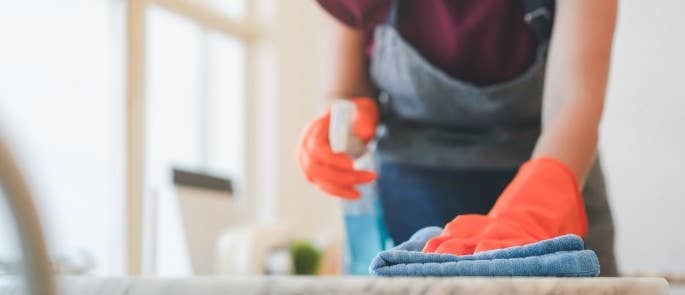
In this article, we’ll explain what these six stages of cleaning involve and how to carry them out when you clean. We’ll also cover the importance of cleaning procedures, as well as how to improve the effectiveness of your cleaning activities and improve your safety while doing so. Finally, we discuss the differences between cleaning, sanitising, and disinfecting, which are often used interchangeably but do have some differences.
This article contains the following topics:
- Why are cleaning procedures important?
- What are the six stages of cleaning?
- How to improve effectiveness and safety while cleaning
- What is the difference between cleaning, sanitising, and disinfecting?
Use the links above to jump to a certain section of the article.
Why are Cleaning Procedures Important?
Effective cleaning is crucial for protecting your and others’ health, as many types of microorganisms and contaminants can pose a serious risk to people’s wellbeing. In fact, keeping the workplace sufficiently clean is a legal requirement under the Workplace (Health, Safety and Welfare) Regulations 1992, Regulation 9.
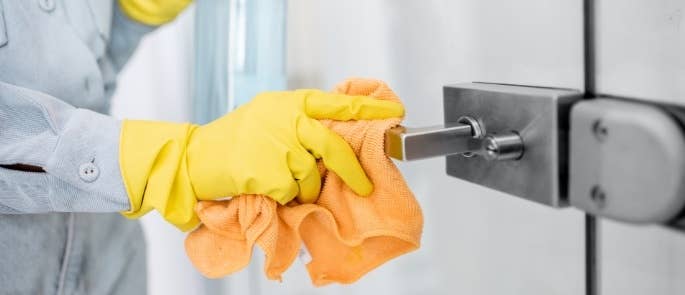
One way of doing so is effective cleaning, particularly of high-touch surfaces, such as door handles, railings, shared appliances and tools, light switches, etc.
Some examples of health risks that cleaning can prevent include:
- Common viruses, such as flu, and cold, in all types of workplaces.
- Food-borne viruses, such as E. coli, salmonella and campylobacter, which can pose a risk in hospitality for example.
- Infections that can transfer via body fluids, such as HIV, for example in healthcare settings and those which involve puncturing skin like tattoo parlours.
- Food allergens, e.g. from food in a restaurant. Even tiny traces of an allergen can cause a reaction in those who are allergic.
- Non-food allergens, such as dusts, which can be present in all types of workplaces and could trigger a reaction in people who have a sensitivity.
By following an effective cleaning procedure, you can help to prevent these from harming people’s health and safety.
What are the Six Stages of Cleaning?
Following an effective cleaning procedure is vital for preventing health and safety risks. It ensures that you fully remove microorganisms, that you do not inadvertently spread them, and that any additional risks are minimised.
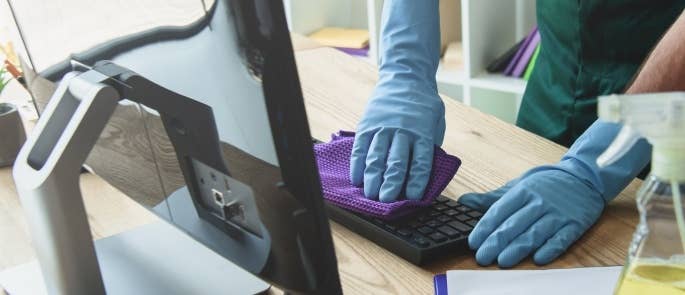
Each of the six stages of cleaning help you to focus on a certain key aspect of effective cleaning, from preparing the surface for a thorough clean by removing debris, to destroying microorganisms, to removing any chemicals, so the surface is properly disinfected and ready for use. For example, if it will be used to prepare food.
The six stages of cleaning are:
1. Pre-Clean
The first stage of cleaning is to remove loose debris and substances from the contaminated surface you’re cleaning. You can do this by wiping with a disposable towel, sweeping, or rinsing. The aim is to remove as much loose debris as possible to prepare the area for the next stage of cleaning.
2. Main Clean
The second stage of cleaning is to loosen any substances, dirt, grease, and debris that you were unable to remove during the pre-clean stage. This involves using hot water and a detergent. You may be able to wipe away the loosened substances right away with something suitable, such as a cloth or mop, or you may have to allow the disinfectant to do its work for a certain amount of contact time before doing so.
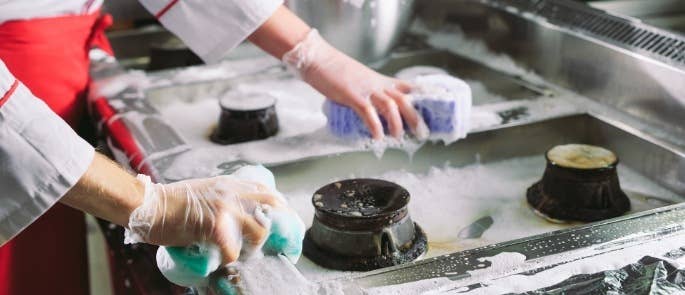
3. Rinse
The third stage of cleaning is to remove all the loosened substances, dirt, and debris as well as the detergent, that was present in the second stage. You can do so using clean, hot water with a cloth, mop, squeegee, etc.
4. Disinfection
The fourth stage of cleaning is to disinfect the surface, which will destroy bacteria and other microorganisms. For example, by using heat or a chemical disinfectant for an adequate contact time. Follow the instructions for any products or equipment you use.
5. Final Rinse
The fifth stage of cleaning is to remove any disinfectants from the previous stage using clean, hot water. This step may not always be carried out however, depending on the disinfectant and surface you’re cleaning. As stated in the previous stage, follow the manufacturer’s guidance and seek further advice if needed.
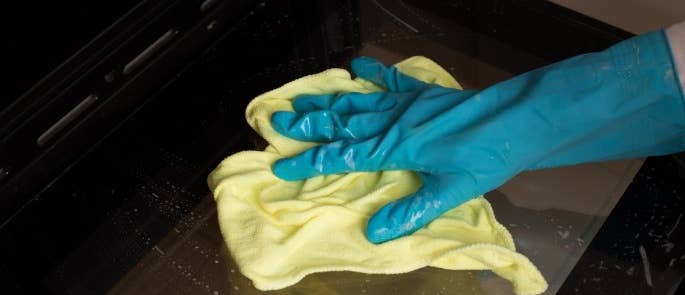
6. Drying
The sixth and final stage of cleaning is to dry the surface, and it’s recommended that you air dry where possible. You can use drying cloths if needed, but they should be single use if so, especially in a commercial setting. You must not air dry any drying cloths that are damp from use and reuse them, as bacteria could grow on the cloths and pose a contamination risk.
By this point, the surface will be fully cleaned and most, if not all, microorganisms will have been destroyed, depending on the substances you used.
Note: You should thoroughly clean any cloths and other reusable cleaning products that you use, including drying cloths after their single use. Wash them in soap and water after finishing and dry them either in a dryer or via air drying (this is suitable for clean, wet cloths, not ones that are damp from use).
How to Improve Effectiveness and Safety While Cleaning
The six stages of cleaning are a useful process to follow for maximising how effectively you clean surfaces. However, there are some other factors you should consider to improve the effectiveness of your disinfection process, technique, and personal safety.
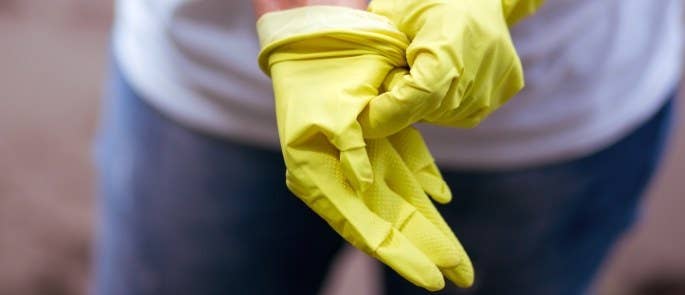
Some effectiveness and safety factors to consider include the following:
- Follow any cleaning schedules or risk assessments for cleaning, if cleaning at work. This ensures that you carry out cleaning in an organised and effective way, as well as address the key areas that have been identified in the risk assessment.
- Follow any training you have received, if cleaning at work. For example, you will likely receive some COSHH training, which will familiarise you with ways to minimise the risks posed by hazardous substances that you may use or create during cleaning.
- Use the right products for the cleaning activities you carry out. They should be able to kill the microorganisms that pose a risk in the premises, e.g. food-borne ones in a catering setting. They should also be suitable for the surfaces and environments where you’ll be using them, such as for the specific material of a kitchen countertop.
- Always follow the manufacturer’s instructions and guidance, including any recommended concentrations and dilutions of chemical substances. Likewise, you should store them safely and in accordance with instructions. This is important for minimising exposure and for ensuring that any incompatible substances are kept apart. Remember to never mix different chemicals together, as this can cause dangerous reactions.
- Follow the NHS guidance for effective cleaning. Their guidance is to always work from the cleanest area towards the dirtiest area (to minimise further contamination of the cleaner areas), from top to bottom rather than going between different areas, and covering all areas with an ‘S’ shaped pattern. Be careful to not go over the same area twice.
- Wear PPE, such as gloves and aprons. Gloves are important for protecting your hands from the risks posed by wet work and chemical products, such as contact dermatitis. It may also be useful to wear an apron, to prevent any potential chemical contamination that could penetrate your clothes and harm your skin, or that you could carry away on your personal clothing and that can continue to pose a risk.
- Ensure that there is sufficient ventilation. This will minimise harmful substances in the air, e.g. the fumes that some chemicals could give off while in use, and which could cause health issues like occupational asthma.
Make sure to always wash your hands after cleaning, with an effective handwashing procedure, even if you were wearing gloves.
Need COSHH Training for Cleaning?
High Speed Training offers a dedicated COSHH Training For Cleaners provides those who carry out cleaning activities the information they need to understand the risks hazardous substances can pose and how these can be controlled.
What is the Difference Between Cleaning, Sanitising, and Disinfecting?
These three terms are often used interchangeably to refer to the process of cleaning a surface and removing harmful microorganisms. However, they do refer to slightly different things, and it’s useful for you to be aware of this if you actively carry out cleaning.
Knowing the difference between the three will help you ensure you’re adopting the right procedures and cleaning to the necessary standards.
What is cleaning?
Although cleaning is a suitable, general term to use for the entire task of making a surface free of debris and microorganisms, from a technical standpoint it actually only refers to one stage of the process.
Cleaning refers to removing visible contamination from the surface, such as spillages, dirt, debris, and other obvious contaminants. In the context of the six stages of cleaning as discussed earlier, this is step one and two.
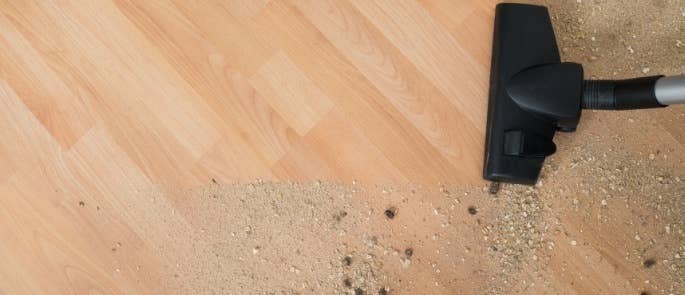
Doing so makes the area more visibly clean and tidy, removes contaminated materials and substances, and prepares the surface for deeper cleaning if needed, so any chemical products can achieve sufficient contact with it.
To achieve a proper clean, one of the next stages are required, as cleaning on its own does not kill microorganisms on the surface.
What is sanitising?
Sanitisation refers to the process of reducing microorganisms on a surface to a safe level, as established by international health standards. It’s particularly important for surfaces that may come into contact with food, to prevent any ingestion risks.
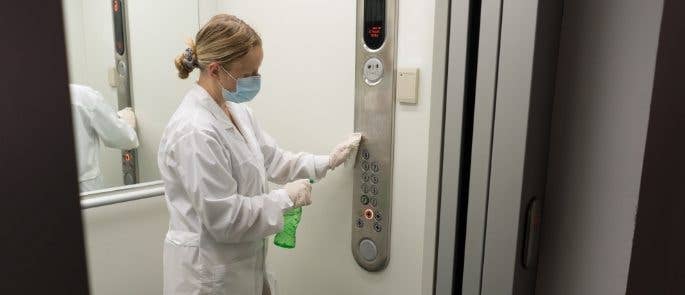
While sanitisation will reduce the risk of infections from microorganisms and kill the majority of bacteria, it is not guaranteed to completely eliminate all microorganisms.
What is disinfection?
Disinfection is a step up from sanitisation, as it is designed to fully destroy all microorganisms and pathogens. There are varying levels of strength and effectiveness of disinfectants, which will be used for different settings depending on the level of risk. For example, a much higher-grade disinfectant will be used in hospitals compared to an office or restaurant.
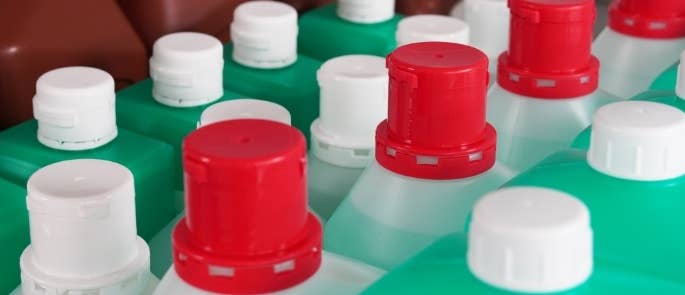
It is up to the user to identify which level of disinfectant they need for the area in which they’re carrying out cleaning. For a workplace, this will usually be identified during a risk assessment and with consultation of specialists and the suppliers and manufacturers of cleaning products, where needed.
Back to TopCarrying out effective cleaning, whether at home or at work, is crucial for protecting people’s health and safety. A good way to do this is by following the six stages of cleaning, as outlined throughout this article, as well as following good practices to improve the effectiveness of your cleaning methods and your safety.
What to Read Next:
- COSHH Training For Cleaners
- How to Start Your Own Cleaning Business
- Risk Assessment for Cleaning: Free Template
- What is a Spill Kit? Contents Checklist
- What are High Touch Surfaces and How Should You Clean Them?


